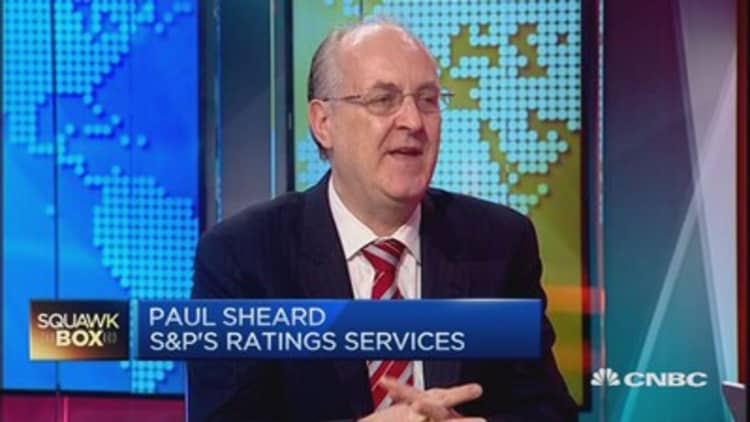Consumer prices in Japan were unchanged from a year earlier in July, underscoring the struggle the Bank of Japan (BOJ) faces in achieving its 2 percent inflation target and building the case for additional monetary stimulus.
The core consumer price index (CPI), which excludes volatile prices of fresh food but includes prices of oil products, was flat in July from the year-ago period, government data showed on Friday, compared with Reuters' forecast for a drop of 0.2 percent and down from a 0.1 percent rise in June.
The core Tokyo CPI for August, considered a leading indicator, dipped 0.1 percent on year, unchanged from the previous month and a touch better than predictions for a 0.2 percent fall.
"If you look at how the inflation is panning out, certainly there is a bigger case for them to add [stimulus]," said Alvin Liew, senior economist at UOB , referring to the BOJ.
In other data, household spending fell 0.2 percent from the year before, versus expectations for a 1.3 percent climb and after declining 2.0 percent in the previous month.
But retail sales rose 1.6 percent on year, beating forecasts for a 1.1 percent rise and following a 0.9 percent gain in the previous month.
Read MoreJapan'seconomic transformation: Are we there yet?
The better-than-expected retail sales reading failed to comfort economists, however.
"The retail sales number is good but it may also be driven partly because of a weaker yen and tourism, and not really due to domestic factors," Liew said.
"Overall domestic demand is one of the key concerns in the recovery," he said.
Earlier this week, BOJ Governor Haruhiko Kuroda sought to reassure investors that the central bank's 2 percent inflation target could be achieved by next year despite weaker oil prices.
The BOJ expects to lift inflation to 2 percent during the April-September first half of next fiscal year, a forecast many economists see as unrealistic.
Kuroda said that corporate profits in Japan were likely to remain strong and that the yen's strong appreciation was temporary. He cited a cycle of wage gains that he said were helping drive up inflation, adding that labor market conditions were very tight. Japan's jobless rate fell to 3.3 percent in July, slightly better than forecasts for 3.4 percent, and down from 3.4 percent in the previous month.

Paul Sheard, chief global economist at ratings agency Standard and Poor's (S&P) says Kuroda's comments should be taken with a pinch of salt.
"I'm not as optimistic as. Mr. Kuroda has to be a cheerleader for the economy and for achieving his target," he said. "You wouldn't look to Mr. Kuroda for your forecasts, you'd look to him to have the right policy stance and message."
With Japan's economy on the brink of deflation once again, the BoJ has its work cut out, added Sheard.
"Abenomics is all about ending deflation – and the BOJ did the right thing (by) launching a very aggressive quantitative easing, but they didn't have fiscal policy on their side," he said.
"Japan is still limping out of a self-induced recession," he said, referring to the consumption tax hike imposed last April that dealt a severe blow to the economy.
With the next tax hike scheduled for April 2017, the pressure is building on Japanese authorities to get the economy on a sustainable growth path.
"April 2017 isn't that far away now, so the clock is really ticking for Mr. Kuroda and the government to get Japan out of deflation before the next round of consumption tax hikes comes because we've seen this movie before," Sheard said.
Reuters contributed to this report.


